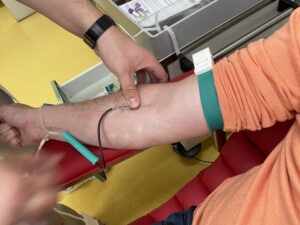Having Diabetes is no picnic, and for anyone whose constantly monitoring their blood sugar, you will need to be extra mindful during these warmer summer months.

Eating excessive sugary snacks, ice cream, cold sodas, or even sampling an excess of harmless fruit or fruit juice, can send a diabetic spiraling.
Diabetes mellitus is a chronic medical condition in which there is too much sugar in the blood. This is medically referred to as having high blood glucose and can result from several different mechanisms.
In Type 1 diabetes, high blood glucose is caused by the inability of the pancreas to produce sufficient levels of insulin, a hormone that regulates glucose. In Type 2 diabetes, high blood glucose is triggered because the body is unable to respond properly to insulin.
Other forms include gestational diabetes, which occurs during pregnancy, and pre-diabetes, which involves higher than normal blood glucose readings that are not yet high enough to be classified as Type 2 diabetes, which is the most common form of diabetes mellitus and affects more than twenty-nine million Americans.
Each year, more than one million new cases of Type 2 diabetes are diagnosed.
Some diabetes mellitus patients may not know they have it because it sometimes produces no symptoms. When symptoms are present, they generally include frequent urination, thirst, fatigue, weight loss, and blurry vision. Complications include chronic renal failure, cardiovascular disease, high blood pressure, eye problems, heart disease, dental issues, and depression.
Diabetes mellitus can be diagnosed with blood tests and controlled with lifestyle modifications and/or medication. The interventions discussed below can help patients keep their blood sugar under control and reduce the risk of complications from this condition.
Control Blood Pressure
Hypertension, also known as high blood pressure, is one of the most common complications of diabetes mellitus and places patients at an elevated risk of developing heart disease.
Blood pressure control is, therefore, a high priority for patients. Blood pressure is measured as a series of two numbers, one when the heart beats (systolic) and the other when it is between beats (diastolic). A normal blood pressure reading is below 120/80, with 120 being the systolic number and 80 being the diastolic number.
Blood pressure can be affected by stress, caffeine, and certain medications.
A diagnosis of hypertension is made after three consistently high readings taken by a doctor on separate days. Patients usually try to make lifestyle modifications to control their blood pressure first, including limiting salt, losing weight, following stress management techniques, and adopting a diet with fewer processed foods. If these measures do not bring blood pressure readings down, doctors will likely suggest patients begin taking beta-blockers, diuretics, ACE inhibitors, or other classes of blood pressure lowering medication to normalize their readings.
These medications are generally well tolerated and have few side effects.





































